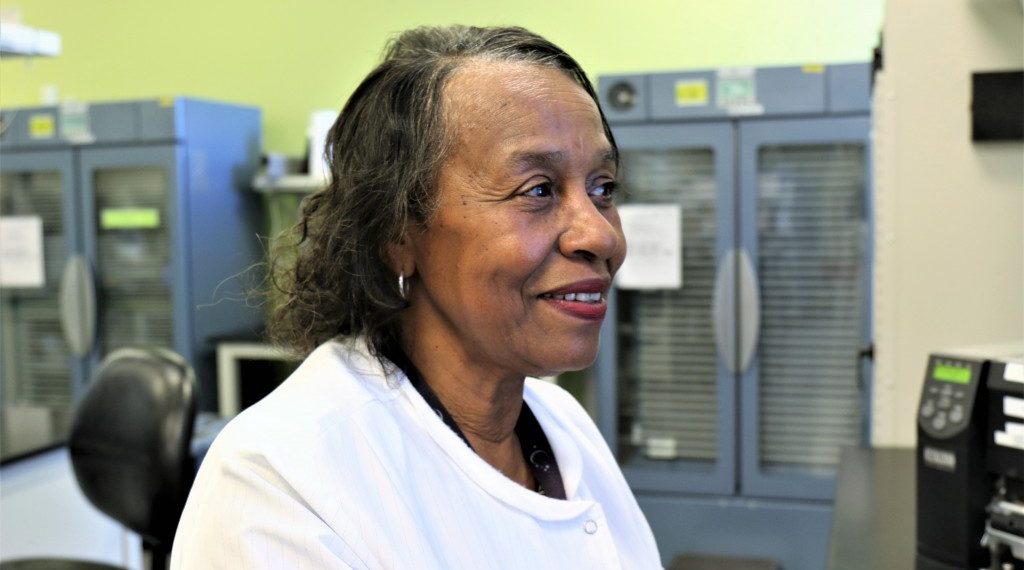
Velma Brooks is someone you remember. Bubbly and bright, she instantly puts you at ease. Indeed, over her years at Bloodworks Northwest, she made friends from all walks of life, including canteen monitors and pioneering platelet researcher Dr. Sherrill Slichter.
Last month, after 52 years, Velma retired from her role as Technician III in Bloodworks’ Product Manufacturing and Control Department. Her job? “It’s hard to explain,” she said. “You have to see to understand.” A quick tour through the labratory floor where blood is tested, separated into components, and prepared for shipment, reveals her decades of experience—and the advancements in transfusion medicine.
An Unexpected Career
Velma moved to Seattle from segregated Louisiana in 1964, a young, newly-married woman with a high school diploma in hand. She fell into the healthcare field almost by accident, filling in as a Bloodworks canteen worker while her sister-in-law took a maternity leave. Her sister-in-law never returned, and Velma stayed—and stayed. “I did the coffee making, the chocolate, put out the cookies, and of course, cleaned up the machines,” she said.
After returning from her own maternity leave in 1968, Velma was offered a role in what was called the “Plasma Department.” “And I said, yes!” She had considered pursuing an office job, but thought better of it. “I’m so glad I didn’t . . . I don’t like sitting, I don’t like doing a lot of paperwork. I like being on the floor working with my co-workers.”

A Pioneering Platelet Partner
In 1970, Velma quietly supported Dr. Sherrill Slichter’s pioneering platelet research, which lead to significant advancements in platelet transfusion. She prepared the platelets according to Dr. Slichter’s specifications, carefully spinning and counting RPMs. “That was a very interesting time,” she said.
She stayed interested. Just three years ago, Velma was certified to run BacT inoculations, a process that detects bacteria in blood cultures.
According to Velma, Bloodworks has come a long way since those early days. Back then, “We would just collect the blood, receive it, and use it as whole blood,” she said. “As years went on, they started developing different types of processes for platelets, cryoprecipitate, different types of components you could utilize from a unit of whole blood.”

Rest, Relaxation, and Line Dancing
After over half a century in one place, it can be hard to image the next stage of life. To test the retirement waters, Velma took a staycation and visited her local recreation center. “The person in charge at the front desk, Joy, told me about different activities—line dancing because I did that for a while,” she said. “I met with Jonathan, and he’s going to show me how to use a computer like you’re supposed to, with folders.”
Full of line dancing and neatly organized computer folders, Velma’s future looks bright. But for the last 52 years, she said she’s glad to have called Bloodworks Northwest home. “I liked my coworkers. People here are nice. . . It’s like you belong. I wouldn’t have wanted to work in any other department.”
Tell Us What You Think!